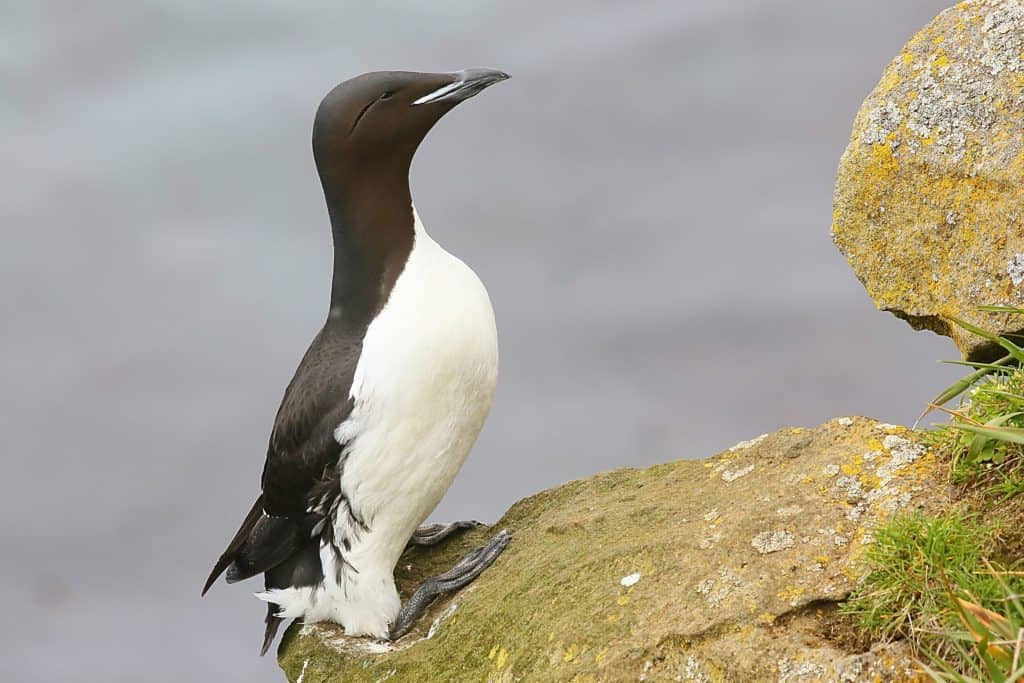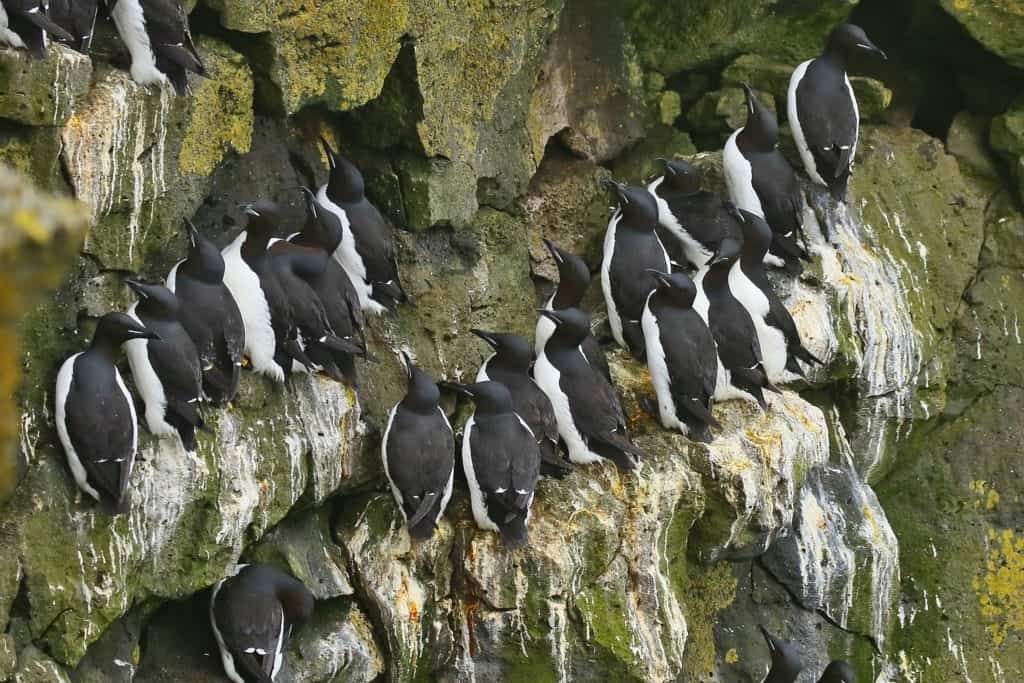Share this article
Massive murre die-offs mirrored by reproductive failure
Murre colonies that experienced die-offs in the Bering and Chukschi seas off the coast of Alaska in 2018 also experienced reproductive failure.
“The majority of colonies that we surveyed in 2018 had suffered complete — or near complete — reproductive failure,” said Marc Romano a wildlife biologist at the Alaska Maritime National Wildlife Refuge and the lead author of a study published recently in Deep Sea Research Part II: Topical Studies in Oceanography.
Data had shown warming temperatures for several years in the Chukchi and Bering seas. For the first time ever, the northern Bering Sea saw almost a complete loss of sea ice and unprecedented warm sea temperatures in 2018.
“Things are changing in the Bering Sea, potentially for the worst,” Romano said.
Other data showed changes in thick-billed murres (Uria lomvia) distribution across the region, but the researchers weren’t sure if the birds were just moving to other areas.

Die offs and reproductive failures are likely linked to warmer ocean temperatures.
Credit: Marc Romano
A number of seabird die-offs have occurred in the past decade off the coast of the Pacific Northwest. In May 2018, the U.S. Fish and Wildlife Service and U.S. National Park Service started receiving reports of dead and dying thick-billed murres and other seabirds in the northern Bering and southern Chukchi seas. Many of those birds were collected by the Coastal Observation and Seabird Survey Team (COASST), an organization of citizen scientists who comb beaches across the northeast Pacific recording dead seabirds.
Romano and his co-authors wanted to see if those die-offs were also reflected in a lack of reproductive success. They conducted surveys on seabird colonies off the coast of Alaska that researchers hadn’t visited in a number of years.
“Based on our monitoring at other locations, we knew there were profound changes,” Romano said. They found near complete reproduction failure on the colonies they surveyed, which is especially strange because thick-billed murres are typically consistent in their breeding patterns every year, he said.
“Failures, and particularly complete failure, is very rare and had never been recorded in the northern Bering Sea or in the Chukchi Sea,” he said.

Thick-billed murres on St. Paul Island, Alaska. Credit: Marc Romano
While it’s difficult to relate the reproductive failure directly to the warming water, Romano said it’s likely linked. “Warmer water may negatively impact primary productivity of the area, which can lead to changes in the availability of prey items for the birds,” he said.
Bottom-up effects such as changes in phytoplankton and small fish abundance can impact seabirds higher in the food chain.
“Poor reproductive success for murres has certainly been occurring more frequently with the rise in water temperatures,” Romano said. “This is pretty unprecedented. Not only for the murres, but for the whole ecosystem.”
Header Image: Thick-billed murres experienced huge die offs in 2018. Credit: Marc Romano








